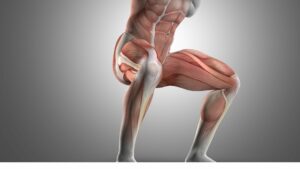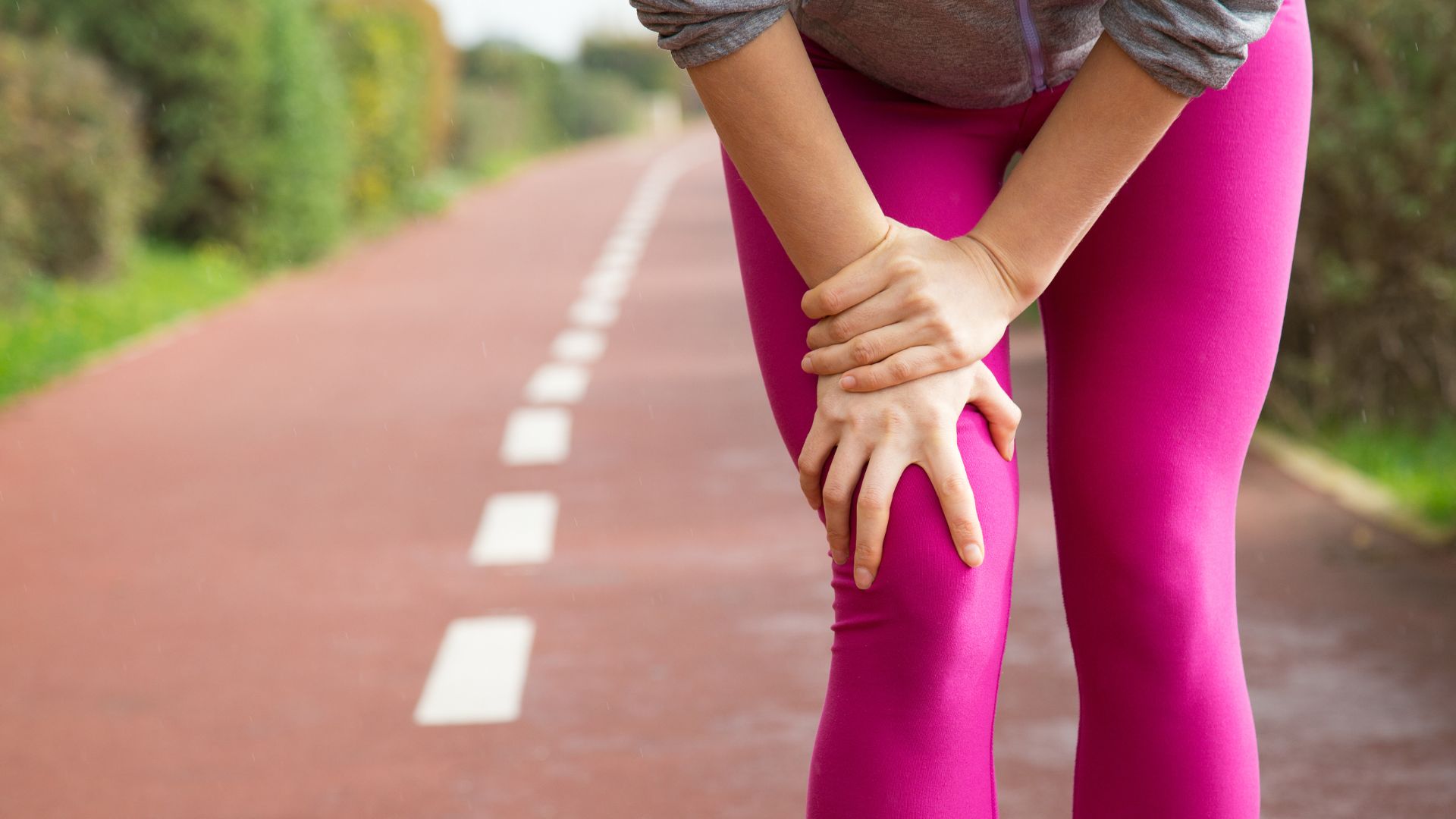Squats are a popular exercise that targets multiple muscle groups, including the thighs. Many people often wonder why squats specifically make their thighs burn.
In this article, we will explore the reasons behind this phenomenon and shed light on the physiological processes that occur during squats.
Whether you’re a fitness enthusiast or simply curious about the science behind exercise, this article will provide you with valuable insights and answers to the question, “Why do squats make me feel a burn in my thighs?”
Squats engage multiple lower body muscles, including the quadriceps, hamstrings, and glutes. The burning sensation in your thighs during squats is due to the activation and fatigue of the quadriceps. As you squat, the quads contract to extend the knees, and the deeper you squat, the harder they work. This burning sensation is normal and indicates that your muscles are being challenged. With progressive training, you can strengthen and build endurance in your thigh muscles.
You engage the muscle groups in your lower body.
When performing squats, several muscle groups in the lower body are engaged, including the quadriceps, hamstrings, and glutes.
The burning sensation felt in the thighs during squats is primarily attributed to the activation and fatigue of the quadriceps muscles.
The quadriceps femoris, commonly known as the quads, is the primary muscle group involved in the squat movement.
These muscles are located at the front of the thighs and consist of four individual muscles: the rectus femoris, vastus lateralis, vastus medialis, and vastus intermedius. The quads play a significant role in extending the knee joint during squats.
During a squat, as you lower your body and then push back up, the quadriceps contract to extend the knees and maintain stability.
You squat deeper.
The deeper you squat, the more the quadriceps have to work to counteract the downward force and generate the upward force required to lift your body back up.
As you continue to perform squats, the quadriceps experience fatigue due to the sustained contraction and the demand placed on them.
This fatigue is a result of the metabolic processes occurring within the muscle fibers. The working muscles produce energy through a process called glycolysis, which breaks down glucose into usable energy.
During glycolysis, lactic acid and other metabolic byproducts accumulate in the muscle fibers. The accumulation of lactic acid is often associated with the burning sensation felt during intense exercise.
The burning sensation in the thighs during squats is considered a normal response to the muscular effort and challenge of the exercise.
It indicates that the muscles are working hard and being pushed to their limits. Over time, as you regularly engage in squat exercises, the quadriceps adapt and become stronger and more resistant to fatigue. This adaptation occurs through the growth and development of muscle fibers, increased neural activation, and improved metabolic efficiency.
To illustrate the involvement of various muscle groups during squats, here is a simplified example:

Muscle Group | Primary Function during Squats
Quadriceps (quads) | Extend the knee joint Hamstrings | Assist in knee flexion and hip extension Glutes | Assist in hip extension and stabilization Calves | Assist in ankle plantar flexion and stabilization Core muscles | Provide stability and maintain proper posture
During a squat, all these muscle groups work together in a coordinated manner to perform the movement and maintain balance and control.
The quadriceps are particularly prominent in providing the necessary force to extend the knees and overcome the resistance encountered during the descent and ascent phases of the squat.
It’s important to note that the burning sensation in the thighs during squats is temporary and should subside once you rest.
Adequate rest and recovery allow the muscles to repair and grow stronger. Gradually increasing the intensity and frequency of your squat workouts over time can help build strength and endurance in the thigh muscles.
Remember to always use proper form and technique when performing squats to minimize the risk of injury.
If you’re new to squats or have any concerns, it’s advisable to consult a qualified fitness professional or trainer who can guide you and ensure you’re performing the exercise correctly and safely.
Here’s a tabular breakdown of the key aspects to consider when it comes to squats:
| Aspect | Explanation | Examples |
|---|---|---|
| Why | Engages multiple muscle groups in the lower body, | Building lower body strength, enhancing |
| improves muscle tone and definition, boosts metabolism, | athletic performance, rehabilitation after | |
| and increases overall functional fitness. | injury. | |
| How | Perform squats by standing with feet shoulder-width apart, | Bodyweight squats, goblet squats, barbell |
| toes pointing slightly outward. Lower your body by | squats, dumbbell squats, front squats, | |
| bending the knees and hips, keeping the back straight, | sumo squats. | |
| and lowering until the thighs are parallel to the ground. | ||
| When | Squats can be performed as part of a regular exercise | During strength training workouts, as a |
| routine, preferably with proper warm-up and sufficient | standalone exercise, or integrated into | |
| recovery time between sessions. | circuit training. | |
| Where | Squats can be done in various settings, such as | At the gym, home workouts, outdoor spaces, |
| gyms, fitness studios, or even in the comfort of your | or any location with sufficient space and | |
| own home. | suitable equipment. | |
| What to | 1. Consider your fitness level and adjust the intensity | – Gradually increase the weights or reps |
| consider | and difficulty of squats accordingly. | over time for progressive overload. |
| – Maintain proper form and technique, | ||
| 2. Focus on maintaining proper form to prevent injury. | including maintaining a neutral spine | |
| and tracking knees in line with toes. | ||
| 3. Incorporate squats into a well-rounded workout routine | – Allow for adequate rest and recovery | |
| that includes other exercises and muscle groups. | between squat sessions. | |
| – Listen to your body and adjust the | ||
| intensity or range of motion if necessary. | ||
| Examples | – Adding squats to a leg day workout routine. | – Jane performs bodyweight squats during |
| – Integrating squats into a circuit training session. | her at-home HIIT workout. | |
| – Using weighted squats to build lower body strength. | – John includes barbell squats in his | |
| – Performing goblet squats with a dumbbell for | strength training routine at the gym. | |
| muscular endurance. | – Sarah incorporates sumo squats in her | |
| outdoor boot camp class. |
Remember, the examples provided are not exhaustive, and there are numerous variations and modifications of squats available. It’s important to choose the squat variation that suits your fitness level, goals, and available equipment. Consulting a fitness professional can help you tailor your squat routine to your specific needs.
Conclusion.
In conclusion, the burning sensation felt in the thighs during squats is primarily due to the activation and fatigue of the quadriceps muscles, which play a significant role in extending the knee joint during the exercise.
As you perform squats, the sustained contraction and demand placed on the quadriceps lead to fatigue and the accumulation of lactic acid and metabolic byproducts, contributing to the burning sensation.
This sensation is a normal response indicating that your muscles are working hard and being challenged. With regular squat workouts, your quadriceps will adapt and become stronger over time.
It’s important to remember to use proper form and technique while gradually increasing the intensity and frequency of your squat exercises to build strength and endurance in your thigh muscles.
If you have any concerns or are new to squats, consulting a qualified fitness professional or trainer can ensure that you perform the exercise correctly and safely.

Hey there, it’s Mike Rrsq, the Editor-in-Chief over at Jsquat.com, and I’m absolutely obsessed with all things squat fitness! I’ve been lucky enough to get some serious recognition for my work in this field. With a solid background in the fitness and wellness industry, I’ve been there right from the get-go, helping shape this website into what it is today.
You see, I’m not just the boss around here; I’m also a passionate contributor. I love sharing my insights through my articles, and trust me, they’re not your run-of-the-mill stuff. Each piece I write is a labor of love, filled with my expertise and real-world experience in the fitness universe. So, if you’re into fitness and looking for some inspiration, you’re in the right place!

